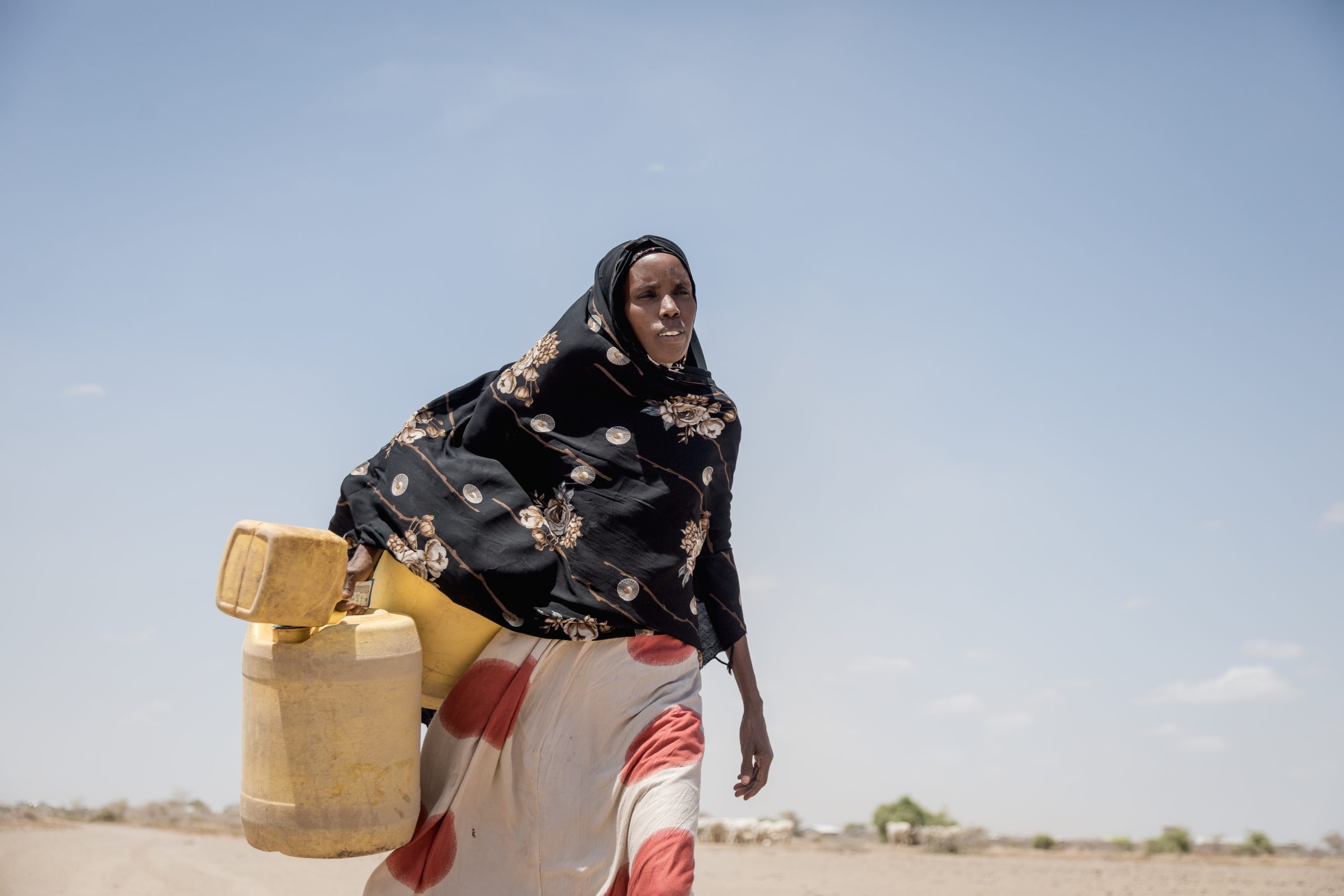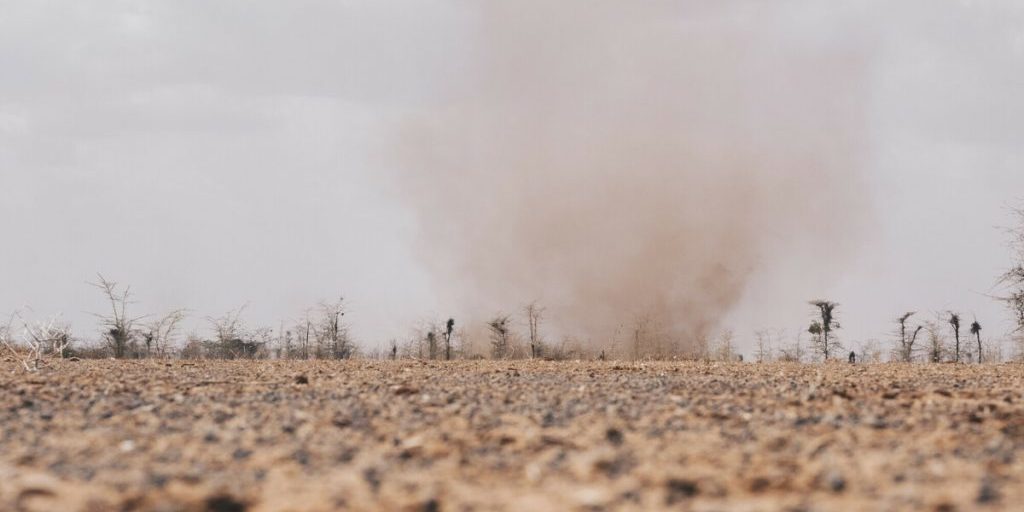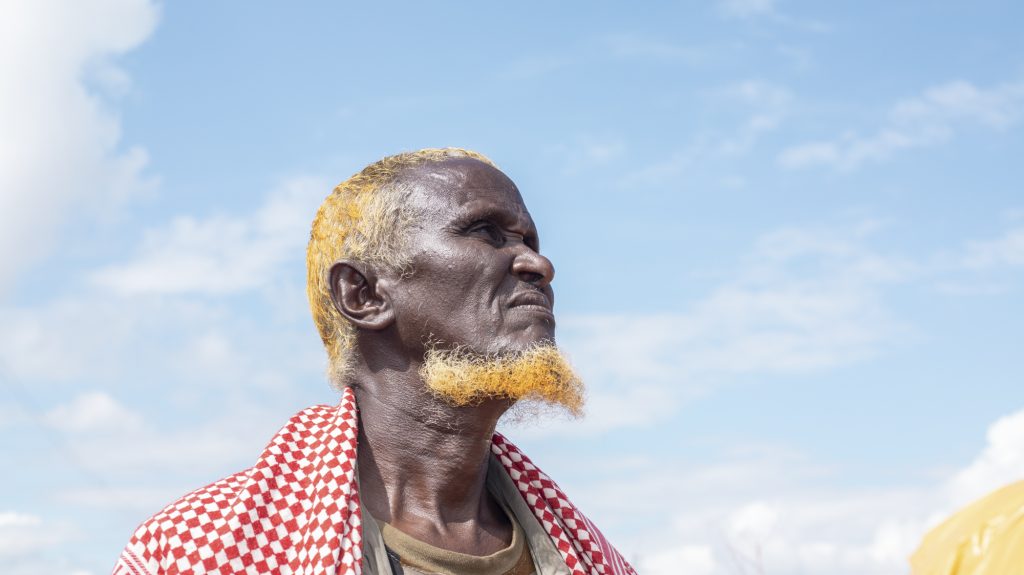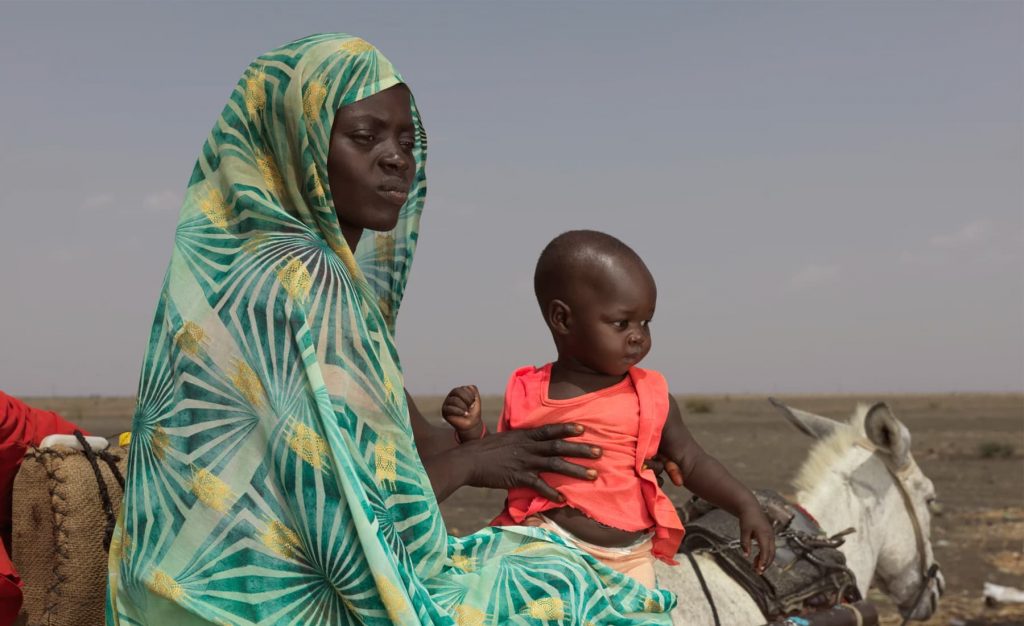The World’s Biggest Humanitarian Crisis Isn’t Making Headlines – But It Should Be
The World’s Biggest Humanitarian Crisis Isn’t Making Headlines – But It Should Be

More than 31.5 million people in East Africa – Ethiopia, Kenya and Somalia – are suffering from the combined impact of conflict, climate and hunger.
The persistent drought conditions first seen in 2020 continued into 2023 for the Horn of Africa, which has left 33.5 million people without enough safe drinking water and over 20 million experiencing severe food insecurity. Six consecutive seasons of no rainfall has made this the longest drought on record for the region.
In some areas in Ethiopia, northern Kenya and Somalia, the cost of water has skyrocketed by 400 per cent since January 2021, making remaining water out of reach for almost 23 million people already facing extreme hunger.
The more than two years of drought has already killed more than 13 million livestock, dried up thousands of hectares of crops and driven 1.75 million people from their homes in search of water and food.
Climate change disproportionately affects vulnerable communities – as seen in Pakistan’s flooding last year that displaced 33 million people. Women suffered the most in these disasters, losing their healthcare, facing violence and increased care work. While climate action projects abound, women’s needs are often not prioritized – with only 2.9 per cent of climate funding going to gender equality objectives – and they are also excluded from any of the decision-making processes.
While famine has so far been averted in countries like Somalia, mostly due to an increase in humanitarian response – only 20 per cent of the UN $7 billion appeal for Ethiopia, Kenya and Somalia has been funded to date, which will derail efforts to help millions of people on the brink.

People in drought-affected rural communities like Tulatula Village in Wajir County in Kenya are the human faces of the global climate emergency. Yet assistance often reaches them too late – when they’ve been forced to leave their homes and get exposed to physical, psycho-social and other health risks.
For Hamud Mohamed, climate change is not some distant threat, it is here now. Once prosperous, when the drought came, everything changed for the father of seven children. He had livestock but when the drought came, Hamud lost all his goats and sheep due to the lack of water and pasture.

“After the drought, we lost everything and could barely sustain two meals a day. We used to have no choice and variety on what to cook,” Hamud explained (pictured right).
The drought has affected the livelihoods of thousands of people in Kenya. Bishara Khalif is a mother of four and also a resident of Tulatula Village. Like Hamud and many others, Bishara has felt the impact of one of the longest droughts in the country that has claimed livestock leaving millions of people poorer.
“I could not afford to have even one meal. We spent most days hungry. Even when I would get visitors, they would leave without eating. It was a terrible life during the drought,” Bishara said.
The humanitarian response in East Africa continues to be inadequately underfunded. A widower, Shimay, who is pictured below, lives with her three (young) sons and due to the adverse effects of the drought, her livestock died and her chances to get any income disappeared.
She ended up having to pull her children out of school as she could no longer afford to cover the costs.
“When the drought hit, a ll our animals died. None of my family members work or has any other source of livelihood apart from the livestock we had.
ll our animals died. None of my family members work or has any other source of livelihood apart from the livestock we had.
Subsequently we had no food and no source of income,” Shimay said.
Climate change has adversely affected the world at large. For Ahmed Haji, he was “living a good life before the drought. The land had good rain and pasture for our animals. I would sell my livestock to provide for my family and pay for my children's education.” After the drought, he was left with nothing.
In rural areas of Wajir in Kenya, Oxfam and our partners are working under the Asal Humanitarian Network to build resilience within the local communities in the face of the climate crisis. This program helps people like Hamud, Bishara, Shimay, Ahmed and 3000 other families in the county receive unconditional cash transfers to help cushion them against the impacts of the drought.
The emergency cash assistance to communities affected by the drought is helping thousands meet their immediate food needs and protect their livelihoods, which vary from household to household. The cash assistance has enabled humanitarian actors to give aid to the people who need it the most in a transparent and accountable manner.
These stories are an example of how Oxfam – working with local partners – are helping to alleviate the consequences of the drought and providing life-saving assistance to displaced families.
But the drought stretches far beyond this small Kenyan village – as these crises continue to wreak havoc on the environment and livelihoods of those in Kenya and beyond – your generous support is what lets us continue to aid those affected by climate change. Help us raise awareness about the world’s biggest humanitarian crisis and please consider donating to ensure this work continues, helping those in need, together.

